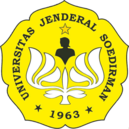Villain Figure’s Ambivalence in the Comic Gundala: Destiny
Abstract
In the comics with superhero genre, the reader will see a villain figure as the opponent of superhero. In September 2019, Bumilangit in collaboration with Gramedia Pustaka published the comic Gundala: Destiny as the complementary media adaptation to the movie Gundala: This Country Needs Patriots which was also published in the same year. This comic presents the figure of Sancaka against Pengkor. Unlike the movie, the main point of narration in the comic is from the perspective of Pengkor as the villain. The comic’s narrative shows the story of Pengkor's childhood until he became a mafia who is feared and respected by many people. With his power, Pengkor has both socially or politically dominance. His power also works with his 10 adopted children as the victims of his subordination. However, Pengkor’s actions to create power over his children were carried out without coercion and repression. In this way, his adopted children obeyed and glorified Pengkor with the nickname 'Father'. By using the structural theory of Tzvetan Todorov and the hegemony of power from Antonio Gramsci, this study aims to dismantle the ambivalent power attitude of Pengkor as the villain figure in the comic Gundala: Destiny.
References
Gramsci, A. (1992). Buttigieg, Joseph A, ed. Prison Notebooks. New York City: Columbia University Press.
Heit, J. (2011). “Introduction.” Vader, Voldemort and Other Villains. Ed. Jamey Heit. Jefferson, NC: McFarland & Co.
Hikmah, N. (2009). Konstruksi Perlawanan terhadap Hegemoni Iran (Analisis Semiotik terhadap Novel Grafis Persepolis: The Story of A Childhood Karya Marjane Satrapi). Depok: Universitas Indonesia.
Imanda, T. (2014). Komik Indonesia itu Maju: Tantangan Komikus Underground Indonesia. Depok: Universitas Indonesia.
Khoiri, A. (2017). Ardian Syaf, Komikus Tulungagung Pemikat DC Comics dan Marvel. Diakses melalui https://www.cnnindonesia.com/hiburan/20170410114154-241-206251/ardian-syaf-komikus-tulungagung-pemikat-dc-comics-dan-marvel?
Oyasujiwo dan Syaf, A. (2019). The Official Movie Adaptation: Gundala. Jakarta: Gramedia Pustaka Utama.
Reynolds, R. (1992). Superheroes: A Modern Mythology. Jackson: University Press of Mississippi
Todorov, T. (1985). Tata Sastra (diterjemahkan oleh Okke K.S. Dzaimar, Apsanti Djokosudjanto dan Talha Bachmid). Jakarta: Djambatan.
Zpalanzani A.. dkk. (2006). Histeria komikita: membedah komikita masa lalu, sekarang dan masa depan. Jakarta: Elex Media Komputindo
Authors who publish with Jurnal Ilmiah Lingua Idea agree to the following terms:
- Authors retain copyright and grant the journal right of first publication with the work simultaneously licensed under a Creative Commons Attribution License (CC BY-SA 4.0) that allows others to share the work with an acknowledgment of the work's authorship and initial publication in this journal.
- Authors are able to enter into separate, additional contractual arrangements for the non-exclusive distribution of the journal's published version of the work (e.g., post it to an institutional repository or publish it in a book), with an acknowledgment of its initial publication in this journal.
- Authors are permitted and encouraged to post their work online (e.g., in institutional repositories or on their website) prior to and during the submission process, as it can lead to productive exchanges, as well as earlier and greater citation of published work.






















.png)






